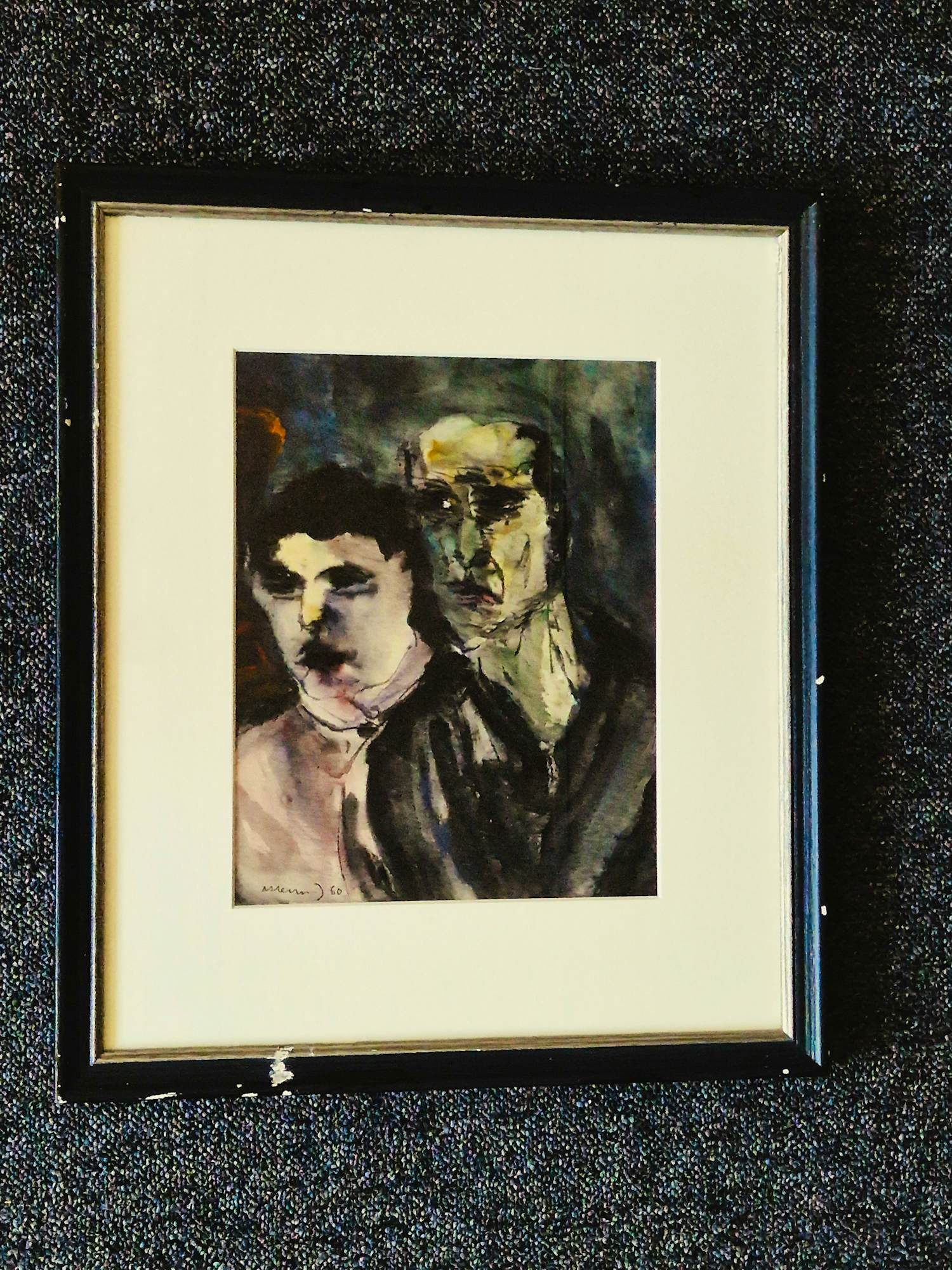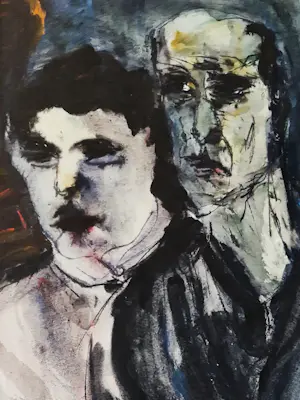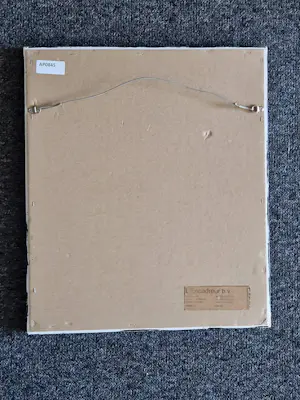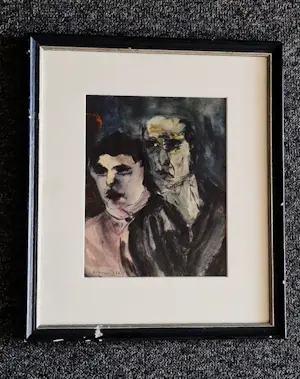Albert Hennig - "The Lost Generation" watercolor and ink - self-portrait young and old
- Description
- Albert Hennig (1907-1998)
| Type of artwork | Painting |
| Year | 1960 |
| Technique | Mixed media |
| Support | Paper |
| Style | Expressionist |
| Framed | Framed |
| Dimensions | 28 x 22 cm (h x w) |
| Incl. frame | 47 x 40 cm (h x w) |
| Signed | Hand signed |
Translated with Google Translate. Original text show .
- Throughout his entire artistic career as a painter, illustrator and photographer, Albert Hennig repeatedly struggled with the prevailing political conditions. First the National Socialists prevented him from doing his work, then the GDR's cultural policy put obstacles in his way. Nevertheless, he developed into one of the last important artists of the Bauhaus school. Difficult conditions sharpened Hennig's eye for social injustices
Politics as the enemy of art Albert Hennig's photo series "Children of the Street", which was commissioned by the social democratic children's friends movement, became a sensational success. For Albert Hennig, this first triumph also meant the temporary end of his promising artistic career: in 1933, during the course of their occupation of the SPD office in Leipzig, the National Socialists who were rising to power destroyed Hennig's series of pictures exhibited there and declared them "degenerate". This meant that Albert Hennig was deprived of his livelihood as an artist and had to serve as a compulsory construction worker from 1934 to 1945. After the war there was a brief sigh of relief; Hennig took part in founding the “Visual Artists” group and joined the SED. However, his hope for a socially just society in the GDR, which he wanted to help shape through his art, was not fulfilled. The public praise of the art historian Will Grohmann hardly disguised the increasingly apparent conflict that existed between the abstract art of Albert Hennig and the state-imposed socialist realism of the GDR's cultural policy. Disappointed, Hennig finally left the SED and went back to work as a concrete worker. Albert Hennig retired, but never retired Unhindered artistic self-realization was only possible for Albert Hennig once he was retired. From 1972 onwards, his extensive late works were created, which earned him his own exhibition in the Chemnitz gallery "Oben" in the same year and attracted international attention after the fall of the Wall. The strict Bauhaus style conquered the enthusiastic art world one last time. The applause that had long been lacking was now heard from many voices for Albert Hennig, and prestigious awards such as the Max Pechstein Prize in 1991 and the Federal Cross of Merit in 1996 were the result. When Albert Hennig died on August 14, 1998, he left behind an extensive artistic legacy, a historically valuable correspondence and the memory of an artist who, although he belonged to a lost generation, was able to successfully resist oblivion. © Kunsthaus Lempertz
| Condition | |||||||||||
| Condition | Very good | ||||||||||
| Shipment | |||||||||||
| Pick up | The work can be picked up on location. As a buyer you must bring your own packaging materials. The location is: Purmerend, The Netherlands | ||||||||||
| Shipment | Parcel post | ||||||||||
| Price | > 10KG or bigger than 1.00 x 0.50 meter
| ||||||||||
| Guarantee | |||||||||||
| Guarantee | By putting the item up for auction, I agree with the Terms of Guarantee as they are applicable at Kunstveiling regarding the accuracy of the description of the item | ||||||||||
The seller takes full responsibility for this item. Artpeers only provides the platform to facilitate this transaction, which has to be settled directly with the seller. More information.
Auction details
| Start time | 16-4-2024 at 23:03 |
| End time | 21-4-2024 at 21:59 |
Starting bid €160
Buyer's premium: 15%
| Pick up | Yes, possible |
| Location | Purmerend, The Netherlands |





 German
German